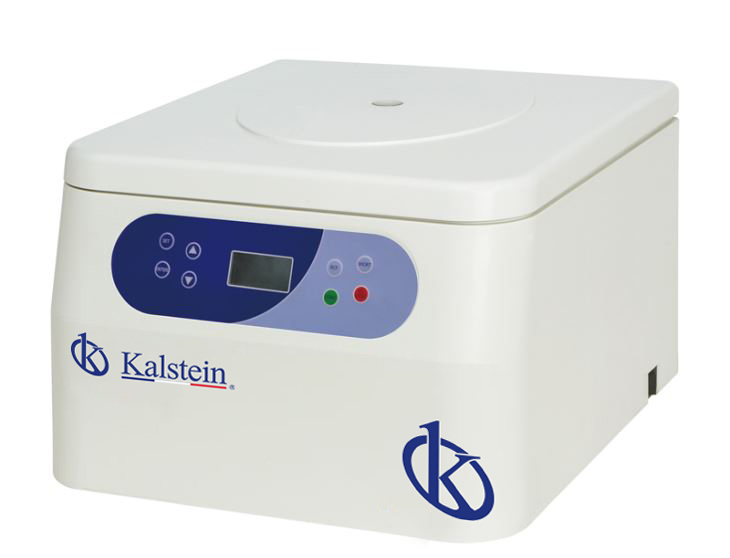When it comes to laboratory centrifuges, both the Centrifuge PRP YR469 by Kalstein and the Microhematocrit DM1424 by Scilogex have gained significant attention for their unique attributes. These centrifuges serve different yet critical purposes in the medical and scientific fields, and making an informed choice can streamline your operations significantly.
The Centrifuge PRP YR469 from Kalstein is designed for precision and efficiency, making it an ideal option for any laboratory requiring detailed separation processes. This equipment is characterized by its ease of use, high capacity, and versatility, cementing its place as a reliable choice in medical centers and research facilities. On the other hand, the Scilogex Microhematocrit DM1424 is specifically tailored for microhematocrit procedures, providing specific solutions with efficient performance.
| Feature | Centrifuge PRP YR469 (Kalstein) | Microhematocrit DM1424 (Scilogex) |
|---|---|---|
| Max Speed | 4500 RPM | 12000 RPM |
| Capacity | 6x12ml tubes | 24 capillary tubes |
| Power Supply | 220V/60Hz | 110V-240V, 50/60Hz |
| Weight | Not specified | 11 kg |
| Dimensions | 280x260x180mm | 280x360x270mm |
How They Function
The Kalstein Centrifuge PRP YR469 functions by rotating its interior rotor at high speeds, which relies on centrifugal force to separate various components of a mixture. It is particularly effective for PRP (Platelet-Rich Plasma) preparation and uses adjustments in speed and time to ensure precise separation.
Conversely, the Scilogex DM1424 caters to microhematocrit needs by using its high-speed rotation to determine the volume percentage of red blood cells in blood samples. It is specifically designed to handle capillary tubes, making it an indispensable tool in hematological assessments.
What Is It For
The Centrifuge PRP YR469 by Kalstein is predominantly employed for the preparation of Platelet-Rich Plasma. This process is crucial in various medical procedures, including wound healing and as a part of cosmetology treatments. The centrifuge’s adjustable settings allow it to function across a wide array of applications, enhancing its utility in a laboratory setting.
Types
Centrifuges can be categorized based on capacity, speed, and type of rotor. Kalstein’s PRP YR469 falls under medium capacity with moderate speed. Meanwhile, the Scilogex DM1424 is categorized as a high-speed, low-capacity centrifuge specialized for microhematocrit determinations.
Market Price
In the current market, laboratory centrifuges such as these can range significantly in price based on their specifications and intended use. The Kalstein Centrifuge PRP YR469, given its versatile functionality, typically is priced in a competitive and accessible range, encouraging laboratories to invest in quality without overspending. In comparison, niche-specific models like the Scilogex DM1424 are often found at a similar price range or slightly higher due to their specialization.
Frequently Asked Questions
What is the maximum tube capacity of the Kalstein Centrifuge PRP YR469?
The Centrifuge PRP YR469 is designed to accommodate 6x12ml tubes, making it suitable for most laboratory requirements.
Can the speed of the Kalstein Centrifuge be adjusted?
Yes, the speed can be adjusted to fit specific experimental needs, allowing for nuanced separation processes.
What is the warranty period offered for the Kalstein Centrifuge?
The Kalstein PRP YR469 typically comes with a warranty period designed to ensure coverage for various operational aspects.
Advantages and Disadvantages
Kalstein Centrifuge PRP YR469 Advantages: This centrifuge is marked by its versatile use, ability to process a variety of samples, user-friendly interface, and robust construction. This versatility is a significant advantage over single-purpose centrifuges.
Scilogex Microhematocrit DM1424 Advantages: Its specialization in microhematocrit processes ensures optimal performance in hematological studies. It is efficient and precise in calculating hematocrit levels with minimal error margin.
Kalstein Disadvantages: While the PRP YR469’s diverse functionalities are generally beneficial, they might pose a learning curve for inexperienced users.
Scilogex Disadvantages: The specialization of the DM1424 means it is not as adaptable for different types of tests, possibly limiting its general utility in broader laboratory operations.
Product Usage in the Field
The PRP YR469 is utilized broadly in medical and cosmetic fields, given its capability to create high-quality PRP preparations. This application extends to surgeries, wound care treatments, and even sports medicine, where quick recovery is paramount.
The DM1424, however, is primarily found in hematological labs and research facilities focusing on blood analysis. Its high-speed rotation ensures precise hematocrit readings necessary for diagnosing various blood disorders.
Recommendations
For optimal performance, regular maintenance, such as rotor inspections and calibrations, is recommended for both centrifuges. For the PRP YR469, users should familiarize themselves with the operational interface for maximum efficacy. Similarly, while using the DM1424, ensure proper handling and loading of the capillary tubes for consistent results.
If you are looking for a fusion of innovation and quality, you have come to the right place. At Kalstein we offer you the luxury of exploring our exclusive laboratory equipment catalog. We manufacture each equipment with a level of excellence. Our intuitive and agile online purchasing channels are designed for your convenience, ensuring the friendliest prices. Do not hesitate any longer, we bring science to life, it is time to become part of our community. https://kalstein.qa/product/centrifuge-prp-yr469/.

